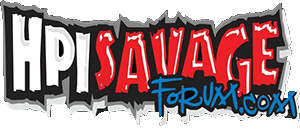wildchild27
DR. DISASTER
- Messages
- 748
- Location
- Etna Green, IN
i don't think the SC is a good idea as robin has clearly stated but each to his/her own and with multiple articles concerning the SC kit most if not all have stated they(whether they are new or have been around a while in this hobby) have had more problems than not with the SC. yes they are very effective on 1:1 motors do to they can retain the pressure charge with the valves unlike a hobby grade mill that has no valving and relies on the tuned wave and back pressure that is built from the pipe, here is a vid that was made by squirrel from thetoyz forum that did a review on one.
http://www.youtube.com/watch?v=u4yTADlRuF0
eric....
http://www.youtube.com/watch?v=u4yTADlRuF0
eric....
